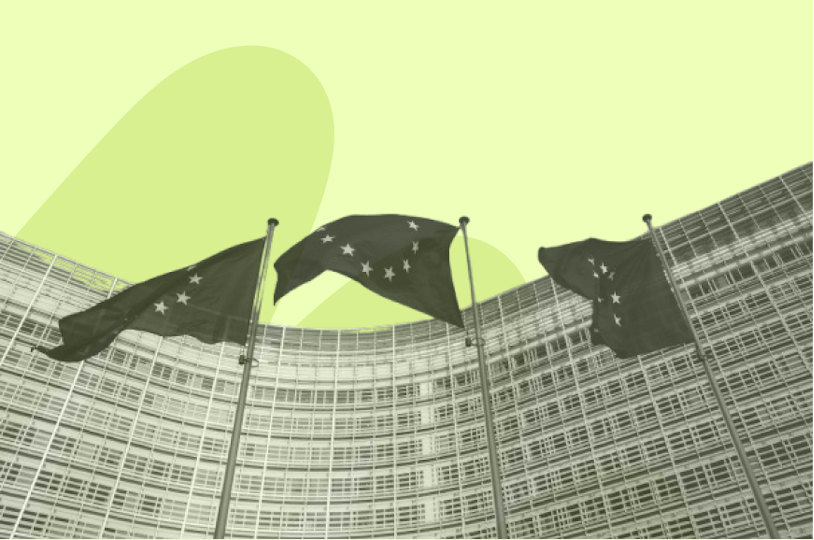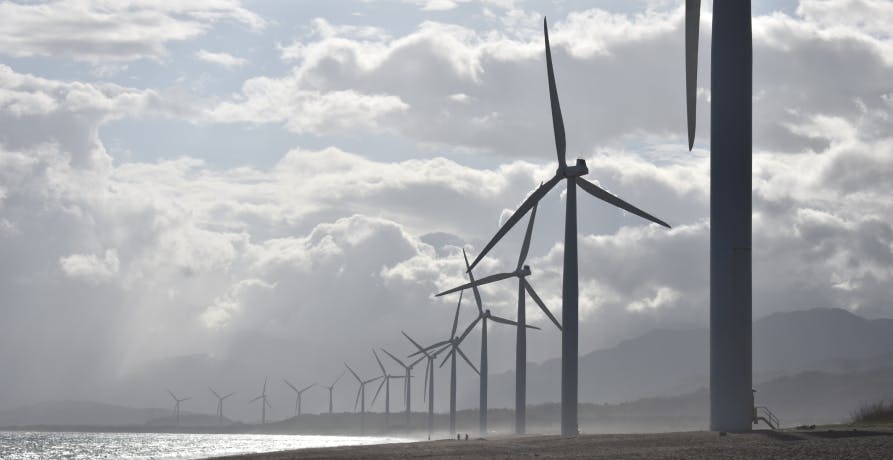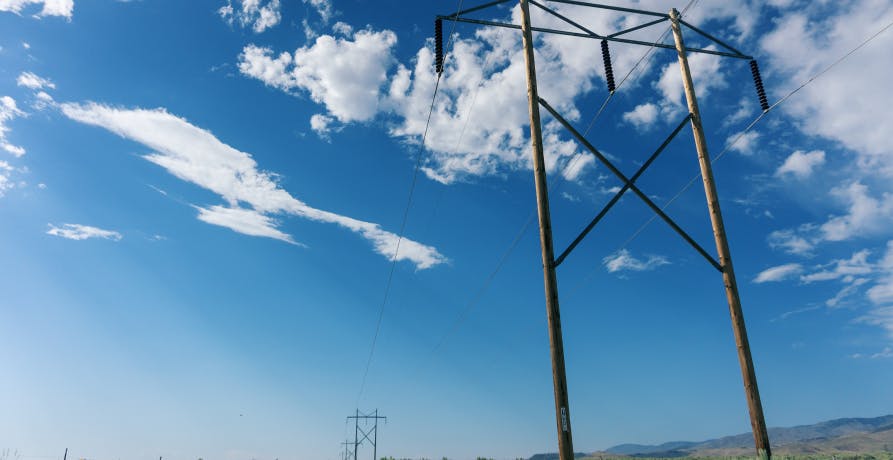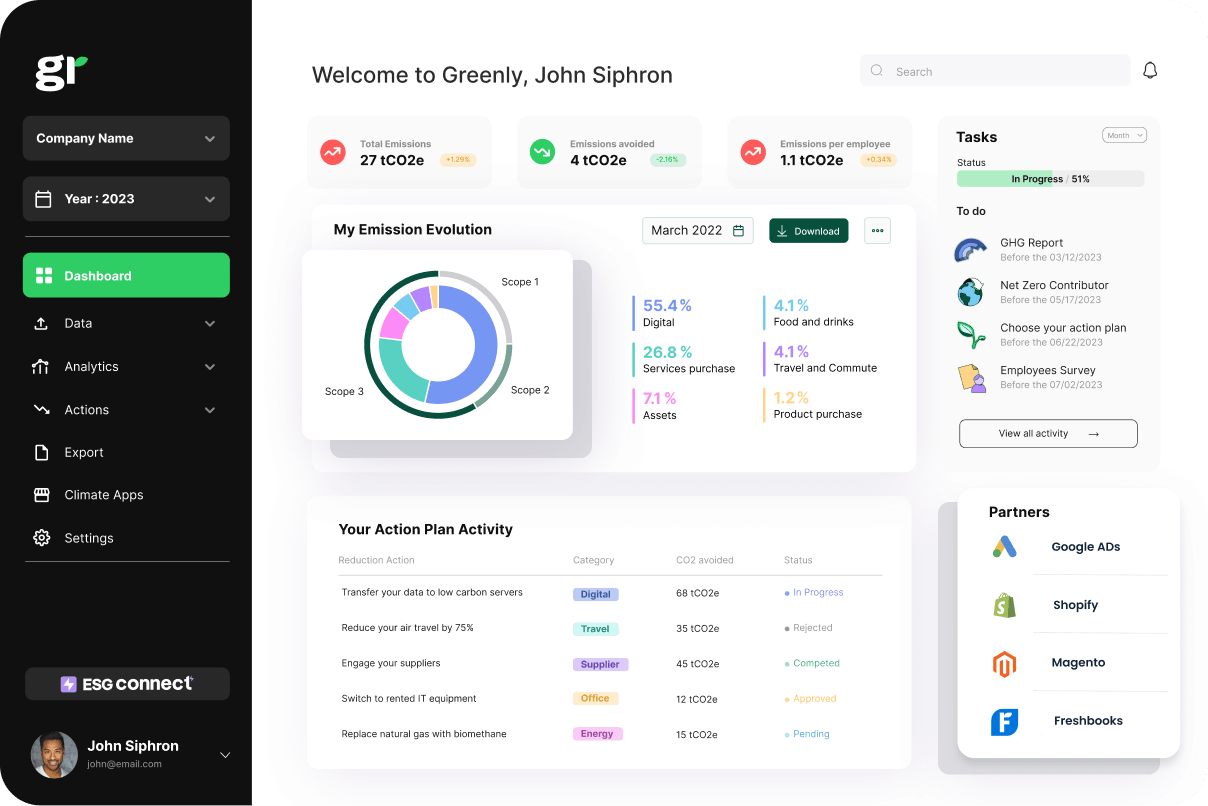
What is the EU Taxonomy?
Discover the EU Taxonomy: what it is, how it defines sustainable activities, and its impact on businesses and financial markets.
ESG / CSR
Industries



The energy mix in the US is more diverse than ever before. Even a couple of decades ago energy sources would have been limited to coal, oil, or gas - all fossil fuels and terrible for the environment. Thankfully, nowadays the choice is significantly more varied, and ‘green energy' is much more commonplace. Consumers now have the power to select a green energy supplier that allows them to minimize their carbon footprint.
👉 In this article, we'll look at why choosing a green energy supplier is important and how consumers in the US can switch theirs.
The energy mix in the US, once heavily dependent on carbon-intensive fossil fuels like coal, oil, and natural gas, has shifted significantly towards renewables. In 2023, about 60% of electricity generation came from fossil fuels, 19% from nuclear energy, and 21% from renewable sources. This shift aligns with efforts to reduce carbon emissions, but the continued reliance on fossil fuels, particularly natural gas, remains a significant challenge in achieving a fully sustainable energy system.

According to the UN, fossil fuels - coal, oil, and gas - are the largest contributors to global climate change, responsible for over 75% of global greenhouse gas emissions and nearly 90% of all carbon dioxide emissions. The burning of these fuels releases large amounts of carbon dioxide and other pollutants like sulfur dioxide, ozone, nitrogen oxides, and soot, which harm both the environment and human health.
According to NASA, in 2023, emissions from fossil fuels rose by 1.1%, reaching 36.8 billion metric tons of carbon dioxide. This increase in heat-trapping gases is the primary reason for rising global temperatures, with 2023 being the hottest year on record, 1.2 degrees Celsius warmer than the average for NASA’s baseline period (1951-1980).
This is why it's crucial for governments, companies, and individuals to tackle carbon emissions. By switching to a green energy supplier or tariff, we can reduce our carbon footprint and support the energy sector's decarbonization. Consumer demand for green energy incentivizes companies to offer sustainable alternatives, driving the transition towards a greener future.
Green energy is power generated from natural, renewable sources that do not emit greenhouse gases or harm the environment. This type of energy is crucial for reducing our carbon footprint and combating climate change. Unlike traditional fossil fuels, green energy sources are sustainable and environmentally friendly.
Green energy sources:
| Green Energy Source | Description |
|---|---|
| Solar Energy | Solar panels capture sunlight and convert it into electricity. This energy is abundant, especially in sunny regions, and can be harnessed on both large and small scales, from solar farms to rooftop installations. |
| Wind Energy | Wind turbines use the kinetic energy from wind to produce electricity. Wind farms can be located onshore or offshore, where wind speeds are typically higher and more consistent. |
| Hydropower | Also known as hydroelectric power, this energy source generates electricity from flowing or falling water. Dams and river currents are common methods for harnessing hydropower, which is highly efficient and reliable. |
| Biomass Energy | Biomass energy is derived from organic materials, such as plant and animal waste. These materials are burned or converted into biofuels to produce electricity or heat. This process helps manage waste and provides a renewable energy source. |
| Geothermal Energy | This type of energy taps into the Earth's internal heat, which can be used to generate electricity or provide direct heating. Geothermal power plants are usually located in regions with high geothermal activity, such as volcanic areas. |
While green electricity is always renewable and environmentally friendly, clean energy refers to power that does not emit greenhouse gases but may come from finite sources or have environmental impacts during production.
| Green Energy | Renewable electricity, no greenhouse gas emissions, and environmentally friendly. Examples include solar power, wind power, hydropower, biomass, and geothermal energy. |
| Clean Energy | No greenhouse gas emissions but may not be renewable or could have other environmental impacts. An example of clean energy is nuclear power. Nuclear energy is considered clean because it does not produce carbon emissions during operation but relies on finite uranium resources and generates radioactive waste. |
Understanding the differences between green and clean energy is important for making informed decisions about energy use and supporting the transition to a sustainable energy future. By choosing green energy sources, we can reduce our environmental impact and help combat climate change.

A green energy tariff allows consumers to buy electricity sourced from renewable resources. In the US, these tariffs are becoming more common as providers shift towards more sustainable energy options, reducing reliance on fossil fuels.
There are two main approaches to green energy tariffs:
Contrary to misconceptions, green energy tariffs use the same grid as conventional tariffs, so no special connections are needed. While using the same grid, your supplier matches some or all of the energy you consume with renewable energy. Suppliers can also buy renewable energy credits to offset fossil fuel energy, leading to claims of 100% renewable energy that might not fully represent the source. Despite this complexity, green energy tariffs play a vital role in promoting renewable energy use and supporting environmental sustainability in the US.
Absolutely! Green energy sources are just as effective as traditional fossil fuels. Your home or business will operate the same as with conventional energy. The key difference is that you'll be reducing your carbon footprint and contributing to the fight against climate change.
Green options may sometimes be more expensive due to the investment in sustainable projects and renewable technology. However, this isn't always the case. Your costs depend on your energy usage and the competitiveness of the deal you choose. Some customers even pay less while helping the planet. Additionally, the price of renewables can be influenced by the cost of gas, as renewable providers adjust their charges based on the wider energy market.
Additionally, individuals can generate their own renewable energy and sell excess power back to the grid, potentially reducing overall costs.
Green energy sources like solar, wind, and hydro have proven to be reliable. Technological advancements and energy storage solutions have significantly improved the consistency and dependability of renewable energy.
Green energy produces no greenhouse gas emissions and has a minimal environmental impact compared to fossil fuels. By using renewable energy, we reduce air pollution, decrease carbon dioxide levels, and help mitigate climate change.
Yes, switching to a green energy supplier is straightforward. You can compare tariffs online and choose a supplier, and they will handle the switch for you. There is usually no disruption to your service.
No, green energy does not affect the performance of your appliances. Your home or business will operate just as efficiently on green energy as it does on traditional energy sources.
Many governments offer incentives for using green energy, such as tax credits, rebates, and grants. Check with your local government or energy provider for available programs.
As we've seen in recent years, fossil fuel prices are vulnerable to a multitude of factors that are often beyond our control. For example, global events such as the war in Ukraine or high natural gas demand in Asia influence prices and can make the fossil fuel market incredibly volatile. Consumers suffer as a result of this by having to pay significantly more on their energy bills. Green energy offers a way out of this since the electricity supply will no longer be dependent on a finite source.
As research, funding, and focus on renewable energy increase, these energy forms will become more affordable. In contrast, fossil fuels are becoming scarcer and more expensive. Renewable energy technologies, such as wind farms and solar panels, may have high initial costs but are cheaper to maintain and operate in the long run.
Technological advancements are also making renewable energy more efficient. For example, in 2003, US solar panels produced only 534 gigawatt-hours, a modest amount of electricity. By 2023, this had surged to 164,502 gigawatt-hours, showing significant progress and contributing around 5.6% of the country's total energy production As these technologies continue to improve, green energy will become even more cost-effective, leading to lower energy bills for consumers and businesses.
The US has experienced fluctuating energy dependency due to varying levels of domestic fossil fuel production and imports. This dependency makes the country vulnerable to global supply and demand changes, often leading to increased energy costs. By investing in green energy technology and facilities, the US can reduce reliance on overseas energy imports, thereby strengthening the national economy.
Alongside economic benefits, green energy enhances energy security in the US. Renewable sources like solar, wind, and geothermal provide an infinite and domestically available supply. Increasing the use of these domestic renewable sources helps stabilize energy prices and reduces dependency on foreign energy supplies, ensuring greater self-reliance and security.
Green energy represents a big opportunity in terms of job creation - it has the potential to bring stable, high-wage employment across the US, including to more rural areas that have traditionally been left behind when it comes to job opportunities.
Green energy also tends to be more labour intensive than fossil fuel technology which is traditionally more capital intensive and mechanised. This means that green energy technology has the potential to create greater job opportunities than traditional energy industries.
We've already touched on this at the beginning of the article but one of the most important advantages of switching to a green energy tariff is that it helps to cut down on harmful greenhouse gas emissions.
Over recent years we've seen the physical effects of global warming with our own eyes, from devastating forest fires in Australia and Canada to flooding of over one-third of Pakistan's landmass, to increased heatwaves; the implications of what will happen if we don't all take efforts to reduce carbon emissions are becoming all too real.
Governments and international bodies across the world are waking up to the situation and are increasingly adopting ambitious net-zero targets. However, since electricity accounts for 25% of US carbon emissions, there's no chance of us achieving these aims unless we all play our part.
💡 This means that both companies and individuals have to look at how they can cut down on their carbon footprint. One of the simplest ways to achieve this is to switch to a green energy supplier.

By switching to a green energy supplier, your business aligns with net-zero targets, a resolution from COP26 where over 190 nations agreed to reduce emissions and avoid a climatological catastrophe. This proactive step positions your business toward a sustainable future, ensuring smoother transitions as green energy becomes the norm.
Adopting green energy can attract eco-conscious customers and clients. A recent study by PWC shows that 80% of customers are willing to pay more for sustainably sourced services or goods. Highlighting your green initiatives can enhance your market appeal and foster strong industry relationships.
Green energy tariffs often have long-term cost benefits due to lower maintenance and operational costs compared to fossil fuels. Additionally, embracing renewable energy can protect your business from the volatility of fossil fuel markets, ensuring more stable energy expenses.
Using green energy helps ensure compliance with future regulations aimed at reducing carbon emissions. Moreover, governments often offer incentives such as tax breaks and grants for businesses that adopt renewable energy, providing financial benefits alongside environmental ones.

Green tariffs will vary among suppliers so it's crucial that you read the fine print to understand what exactly this means. For example, some green energy providers will match your electricity usage by giving back the equivalent in renewable energy to the National Grid. For others, this means that they promise to offset your energy usage by investing in carbon offsetting projects (usually tree planting).
❗️Watch out for greenwashing - some suppliers may also offer ‘renewable energy', but double check what this actually means as often it can be limited to as little as 15%, meaning that the rest of the energy is provided by non-renewable sources such as natural gas and coal.
To work out if the provider is as green as they claim to be, take a look at their website and search for their fuel mix disclosure which will detail their sources of energy. If it's still not clear, don't hesitate to get in touch with them and ask the question directly.
It can't be denied that fossil fuels have been devastating for the environment and our climate. For years our heavy reliance on these fuels has released harmful amounts of carbon dioxide and other pollutants into the environment. We are now waking up to the consequences of this and everyone (governments, companies, and individuals) must play their part to help mitigate the worst effects.
Achieving net zero requires that companies and individuals look at ways they too can reduce their impact on the environment, and more specifically, cut down their carbon footprint. One of the most significant sources of emissions comes from the consumption of energy and so we need to address this if we're serious about having an impact. One such way is to switch to a green energy supplier.

Greenly supports companies in their efforts to reduce emissions and embrace greener practices. Our suite of services includes:
Carbon management
Greenly offers a range of services to help manage carbon footprints effectively:
Decarbonizing your supply chain
Greenly helps engage suppliers and transition to low-carbon options, achieving greater transparency and effectively managing Scope 3 emissions. Sustainable sourcing initiatives build greener partnerships and reduce emissions throughout your supply chain.
Intuitive and seamless platform
Greenly’s user-friendly platform streamlines the process of calculating and monitoring your carbon footprint. It helps your business manage its environmental impact effortlessly, meet ESG goals, and enhance sustainability.
Why Choose Greenly?
Greenly offers comprehensive support for your green journey, from carbon measurement and custom action plans to supply chain decarbonization and seamless platform integration. With Greenly’s help, your business can significantly reduce its environmental impact and achieve lasting sustainability.
Contact Greenly today to start leading the way in sustainability and build a greener future for your company.
